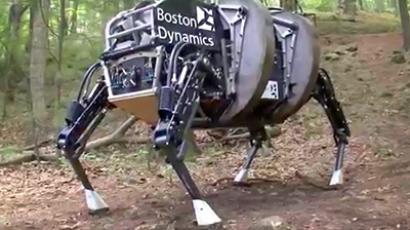DARPA going to war with bootleg electronics

The United States Department of Defense is asking engineers to develop a nearly microscopic-sized component that could be used to help identify and combat counterfeit or otherwise suspect electronic parts.
DARPA — the Pentagon's Defense Advanced Research Projects Agency — published a call for proposals this week that, if all goes as planned, could save the US military millions of dollars.
According to the agency, more than one million suspect electronic parts have been spotted in just the last two years, and seriously-flawed components could theoretically cause entire systems to crash.
“Counterfeit, or otherwise suspect electronic components, present a critical risk for the Department of Defense,” DARPA said in their call for proposals this week, “where a malfunction of a single part could lead to system failures that can put warfighter lives and missions at risk.”
To avoid any such complications, DARPA has launched a program that seeks to develop a tool — a tiny component, or “dielet” — that can verify the authenticity of a protected electronic component and ensure that it is trustworthy enough to be used.
“The dielet will be designed to be robust in operation, yet fragile in the face of tampering,” Kerry Bernstein, DARPA program manager, said in a statement this week. ”What SHIELD is seeking is a very advanced piece of hardware that will offer an on-demand authentication method never before available to the supply chain.”
Very advanced, but also very affordable — the SHIELD program, Bernstein said, “demands a tool that costs less than a penny per unit, yet makes counterfeiting too expensive and technically difficult to do.”
Already, though, counterfeiting has cost the US military plenty. A 2011 Senate Armed Services Committee investigation found more than 1,800 cases of counterfeit parts being used in US weapons, including the Alenia C-27J Spartan medium-sized military transport aircraft, Boeing's P-8A Poseidon long-range surveillance and reconnaissance aircraft, Lockheed Martin’s turboprop military transport aircraft C-130J Super Hercules and Sikorsky’s SH-60B Seahawk helicopter used by the US Navy. Around 70 percenet of the bootleg electronic founds in those machines originated from China, the Senate found.
In another instance, the Missile Defense Agency found 800 fake parts in a single missile intercept system. To correct that issue alone cost the US government over $2 million.
Should the SHIELD program succeed, the DARPA hopes tiny, 100 micron x 100 micron dielets will be able to catch counterfeit components. The agency says they want to receive proposals that would "revolutionize electronic authentication with potential scalability and advanced technology not available today,” and will host a workshop at DARPA headquarters next month so interested parties can learn more.
According to DARPA, proposed dielets should contain a full encryption engine, sensors to detect tampering and would readily affix to today’s electronic components such as microchips.
“Successful development of SHIELD technology would provide 100 percent assurance against common threat modes,” the agency said.














